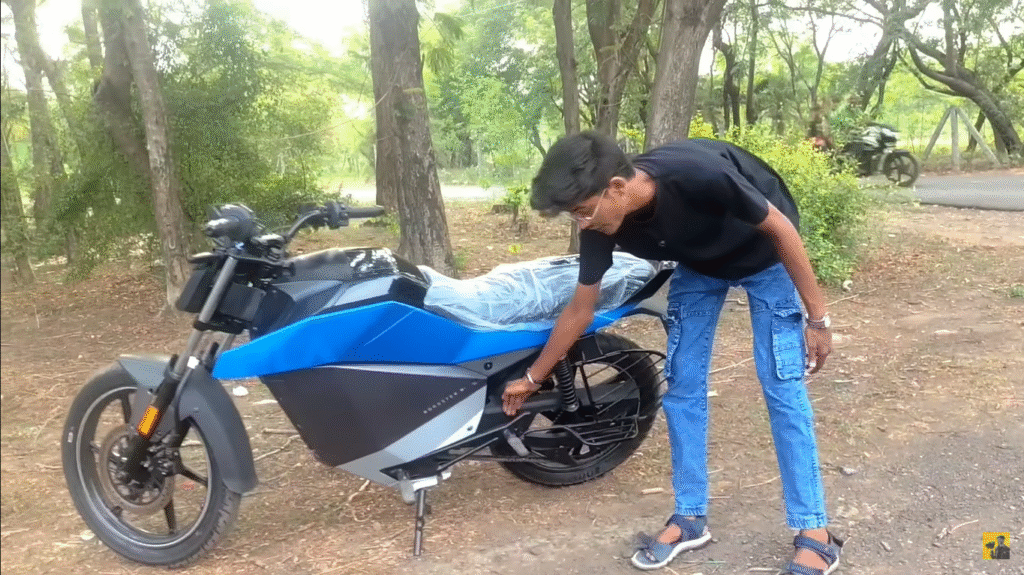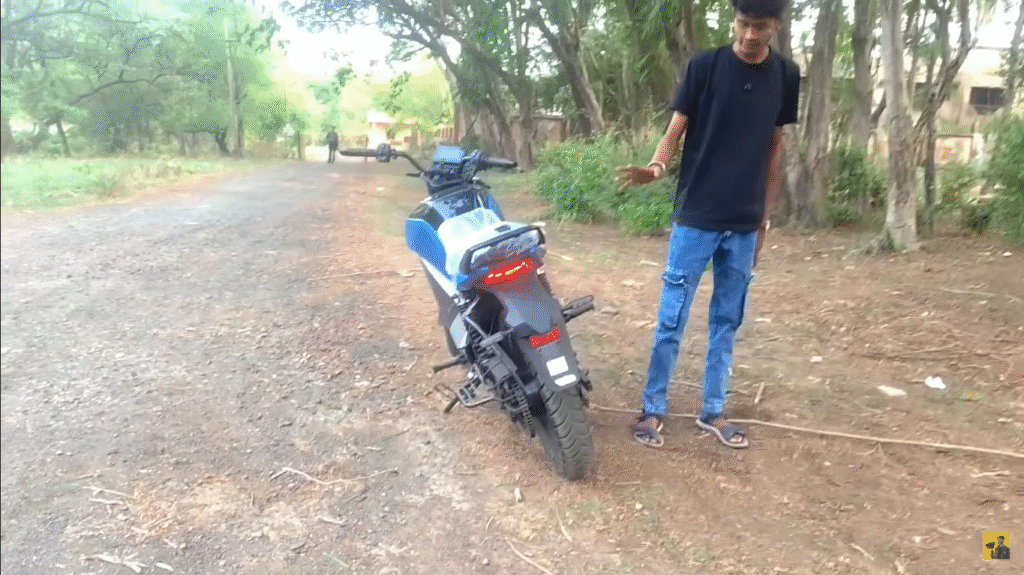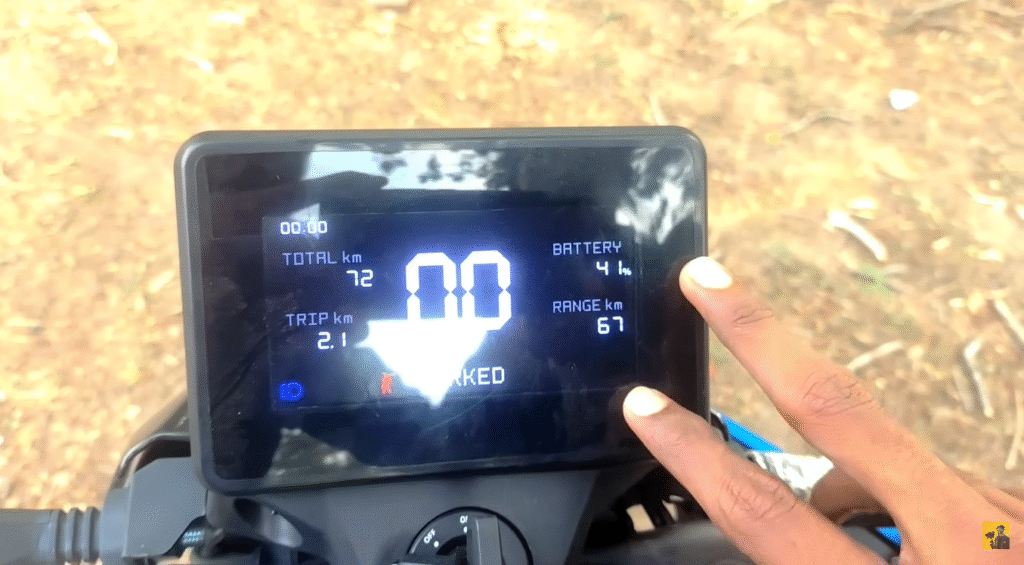In June 2025, I took the OLA Roadster X Plus 4.5kW for a 70 km test ride through Bengaluru’s busy streets and open roads, expecting a game-changer in the electric motorcycle world. Priced at ₹1.35 lakh (ex-showroom), it boasts a 220 km real-world range, 120 km/h top speed, and features like cruise control and reverse mode. While it’s a thrilling ride with cost-saving potential, my experience revealed serious drawbacks that might make you think twice. With the global electric two-wheeler market hitting 10 million units in 2024 (Statista), competition is fierce, and the Roadster X Plus falls short in key areas. Here are my top 5 reasons to avoid this bike in 2025, based on my hands-on testing, insights from BikeWale, NDTV, and @OlaElectric on X.
Top 5 Reasons to Avoid the OLA Roadster X Plus
1. Questionable Build Quality and Durability
In my experience, the Roadster X Plus’s build quality was a major letdown, with flimsy components that didn’t inspire confidence for its ₹1.35 lakh price tag. The fiber-heavy body felt lightweight but fragile, and durability issues surfaced quickly, echoing concerns about OLA’s concept bikes (BikeWale).



- Flimsy Indicators: One indicator broke within a week, a common issue per X user feedback (@OlaElectric).
- Fiber Body Concerns: The mudguards, chain cover, and instrument cluster housing felt cheap, prone to cracks on rough roads, unlike the Ather 450X’s sturdier build.
- Wobbly Side Stand: The stand nearly tipped the bike on uneven ground, and the lack of a main stand was frustrating.
- Tyre Grip Issues: Ceat Zoom tyres slipped on wet patches, unlike the Revolt RV400’s grippier tyres, per BikeWale.
- Long-Term Doubts: The steel chassis is solid, but the overall build raised concerns about surviving years of daily use, per HT Auto.
2. Unreliable After-Sales Service and Delivery Delays
I found OLA’s after-sales service and delivery timelines to be a significant hurdle, with delays and poor support plaguing the Roadster X Plus rollout. NDTV reported delivery delays from April to May 2025, and X posts (@OlaElectric) highlight customer frustration with service quality.
- Delayed Deliveries: Originally set for March 2025, deliveries slipped to May, disrupting plans for buyers in Bengaluru and beyond (NDTV).
- Service Network Gaps: OLA’s service centers are sparse outside urban hubs, making repairs inconvenient for rural riders, per BikeWale.
- Poor Response Times: X users (@OlaElectric) reported weeks-long waits for minor fixes, unlike Bajaj Chetak’s reliable network.
- Warranty Concerns: The 3-year warranty (extendable to 5/8 years) is appealing, but slow service undermines its value, per EvoIndia.
- Homologation Issues: NDTV noted thermal management and battery issues during testing, delaying road-readiness and eroding trust.
3. Subpar Rear Braking and Suspension
The Roadster X Plus’s rear braking and suspension disappointed me during my test ride, compromising safety and comfort. While the front disc brake was sharp, the rear drum brake and stiff shocks fell short, especially compared to rivals like the Tork Kratos R (BikeWale).
- Weak Rear Drum Brake: Felt sluggish and ineffective, dragging the bike during quick stops, unlike the Revolt RV BlazeX’s dual discs.
- Stiff Rear Suspension: The twin shocks jarred my back on potholes, making long rides uncomfortable, per my experience.
- Brake-by-Wire Limitations: While it extends pad life, it didn’t compensate for the rear brake’s poor performance, per HT Auto.
- Safety Concerns: Weak braking at 120 km/h in Sport mode felt risky, especially on busy roads, unlike Ather Rizta’s balanced setup.
- Urban Challenges: Pothole-heavy cities like Mumbai or Manila amplify these flaws, reducing rider confidence, per BikeWale.
4. Slow Standard Charging and Limited Fast-Charging Access
In my experience, the Roadster X Plus’s charging setup was a mixed bag, with slow standard charging and limited hyper-charging access outside urban areas. The 4.5kW battery takes too long to charge for riders needing quick turnarounds, per Electrek.
- Long Standard Charging: The 1kW charger took 6–6.5 hours for 0–100%, impractical for daytime use, unlike the Oben Rorr EZ’s 4-hour charge.
- Bulky Charger: The charger’s size made it hard to carry, despite the under-seat compartment, per my tests.
- Limited Hyper-Charging: The 2kW hyper-charger (1 hour) is only available at OLA’s urban stations, scarce in rural areas, per @OlaElectric.
- Range Trade-Off: Achieving the 220 km range in Eco mode requires patience, as Sport mode (125 km) demands frequent charging.
- Global Drawback: In markets like Europe with robust EV infrastructure, slow charging feels outdated compared to Super Soco TS Hunter, per HT Auto.
5. Overhyped Range and Performance Claims
I found OLA’s range and performance claims for the Roadster X Plus exaggerated, with real-world results falling short of the 252 km IDC range and 125 km/h top speed (BikeWale). This gap between marketing and reality, noted in X posts (@OlaElectric), could disappoint buyers.
- Range Discrepancy: I got 220 km in Eco mode, but only 125–130 km in Sport mode, far from the 501 km claim for the 9.1kWh variant, per HT Auto.
- Top Speed Limitations: Reached 120 km/h, not 125 km/h, and sustaining high speeds drained the battery quickly, per my tests.
- Thermal Management Issues: NDTV reported battery and BMS concerns, potentially affecting range reliability in hot climates like India or Southeast Asia.
- Marketing Hype: OLA’s “fastest electric motorcycle” claim feels overstated when rivals like Tork Kratos R offer consistent performance, per BikeWale.
- Buyer Expectations: Overpromising risks alienating riders in global markets expecting dependable specs, per Electrek.
Global Market Context: Falling Short of Rivals
The global EV two-wheeler market, with 10 million units sold in 2024 (Statista), is highly competitive, and the Roadster X Plus struggles against rivals like the Revolt RV400 (150 km range, ₹1.25 lakh) and Tork Kratos R (180 km range, ₹1.30 lakh). Its 220 km range and 120 km/h speed are impressive, but build quality, service issues, and charging limitations lag behind Ather or Bajaj, per HT Auto. In markets with EV subsidies (India, Europe), its ₹1.35 lakh price is attractive, but reliability concerns make alternatives like the Super Soco TS Hunter more appealing, per BikeWale.
About the Author
Utkarsh Gupta is a Bengaluru-based tech and automotive journalist with 5 years at Youtube, testing over 30 electric vehicles. He shares hands-on insights for global riders.
Sources
- BikeWale: https://www.bikewale.com
- Electrek: https://electrek.co
- Statista: https://www.statista.com
- HT Auto: https://auto.hindustantimes.com
- EvoIndia: https://www.evoindia.com
- NDTV: https://www.ndtv.com
- Times of India: https://timesofindia.indiatimes.com
- X post by @OlaElectric: https://x.com/OlaElectric




[…] Top 5 Reasons to Avoid the OLA Roadster X Plus […]